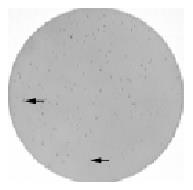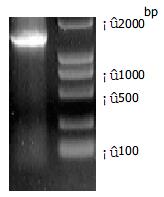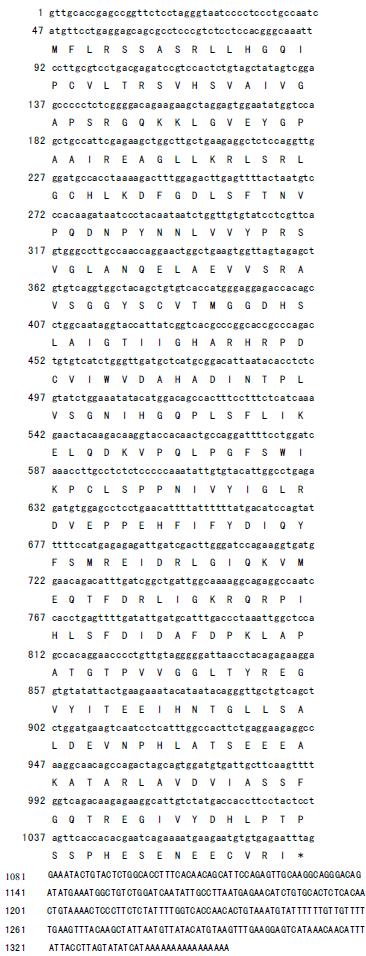INTRODUCTION
Liver regeneration is a system suitable for investigating normally regulated growth[1-4]. After surgical removal of 70% of the mass of a healthy liver (two-thirds hepatectomy), residual tissue enlarges to make up for the mass of removed substance in entirety, in small animals, this process usually lasts 5 to 7 d[5-7].
The growth response after partial hepatectomy is governed by priming and progression through the cell cycle[2,6,8]. The priming phase coincides with loss of growth inhibition and represents the G0 to G1 transition, whereas the progression phase acts on promoting cell replication and represents the G1 to S transition. Priming involves the activation of a group of non-specific factors, which are necessary, but not sufficient for the S phase completion; they comprise the nuclear factor for kappa chains (NF-κ) in B cells, signal transducer and activator of transcription-3 (STAT3), activator protein-1 (AP-1), CCAAT enhancer binding protein, and several immediate early genes like epithelial growth factor (EGF), tumor necrosis factor-alpha (TNF-α, IL-6), insulin, and matrix changes[9-15]. The priming step is reversible until the cells have crossed the so-called G1 checkpoint, the cells thereupon being irreversibly committed for replication. Moreover, the initiation of the growth response depends on complex interactions among hepatocytes and nonparenchymal cells, the extracellular matrix (ECM), endocrine, autocrine, paracrine, and neuroregulatory factors, oxygen free radicals, metabolites, and nutrients[2,6,9,16]. Progression signals include hepatocyte growth factor (HGF), transforming growth factor-alpha (TGF-α), EGF and insulin. The regulation of hepatic regenerative process depends on a number of myriad factors that ultimately modulate immediate-early, delayed-early, and liver-specific gene expression[2,6,9,17-20].
The termination of hepatic regeneration still remains an enigma. A variety of factors have been touted as growth inhibitors/terminators during the regenerative response once recovery of the liver mass has been achieved.TGF-β and activins are regarded as potent inhibitors involved in the termination response[21,22]. TGF-β is a fibrogenic cytokine secreted by hepatic stellate cells, TGF-β mRNA, almost undetectable in normal liver, increases within 3-4 h after partial hepatectomy, and attains a plateau after 48-72 h. TGF-β1 overexpression in transgenic mice inhibits the abundance of the cyclin-dependent kinase activating tyrosine phosphatase cdc25A protein, and is associated with increased binding of histone deacetylase 1 to p130 in the liver[23]. Activin A (the homodimer of the inhibin βA chain) inhibits but follistatin (anactivin-binding protein) promotes hepatocyte proliferation. Whereas activin A is a negative regulator of hepatocyte proliferation, mice deficient in both activin βC and activin βE, are not different from wild-type mice with respect to liver development and the regenerative response after partial hepatectomy. The activin system also plays a significant role in the dynamics of the ECM, in particular fibronectin; ECM components are reconstructed during desinualization and hepatocyte cluster formation. After rat liver injury and partial hepatectomy, hepatocyte activin A receptors are down-regulated at 24 hr and normalized at 72 hr. This phenomenon may be involved in rendering hepatocytes responsive to mitogenic stimuli, whereas increased activin A levels stimulate stellate cell production of fibronectin, important for the growth and proper placement of regenerating hepatocytes[24].
Despite the research efforts, our knowledge on the regulatory mechanisms of cell growth, differentiation and tissue organization is limited. There may be some unknown factors that may play important roles in the process of liver regeneration. To acquire a better understanding on the mechanisms involved, some researchers have established a series of successive partial hepatectomy (SPH) models. These mainly include the long interval successive partial hepatectomy (LISPH) in which an interval of more than three weeks is applied as described by Wu et al, the SPH model where a one-third hepatectomy 2 wk after a two-thirds hepatectomy is performed as described by Takeshi et al[25], and the short interval successive partial hepatectomy (SISPH) model (0-4-40-76-112 hr) which has an interval of 4 and/or 36 h because the cells would re-enter into dedifferentiation stage after 4 hr and reach the peak of cell division after 36 hr following partial hepatectomy as described by Xu et al[26]. Studies have demonstrated that SISPH could provide more useful materials for analyzing the mechanism of liver regeneration[27]. We have begun identifying and characterizing some genes that are strongly expressed in liver regeneration. We took 0 h and 112 hr as driver and tester respectively in 0-4-36-36-36hr SISPH model and a suppression subtracted hybridization (SSH) method was performed[28-30]. Then we constructed a forward-subtractive cDNA library from which we have cloned 53 up-regulated expressed sequence tags (ESTs). Among these, nine ESTs were 100% homologous to GenBank and 44 ESTs were homologous to GenBank. one of these ESTs was found to be a novel gene in GenBank. In the present study, we have used one subtracted probe from suppression subtracted library in liver regeneration and isolated its full-length cDNA from cDNA library by the phage in situ hybridization method. Based on bioinformatics, we suggest that it might play important roles in the regulation of initiation of liver regeneration.
MATERIALS AND METHODS
Establishment of the SISPH model
Adult Spargue-Dawfey rats (weighing 200-250 g) were provided by the Experimental Animal House of Henan Normal University, and the 0-4-36-36-36 hr SISPH model was made according to the method described by Xu et al[26]. Lobus external sinister and lobus centralis sinister, lobus centralis, lobus dexter and lobus candatus were removed one by one at four different time points, i.e. at 4, 36, 36 and 36 hr (total time: 4 hr, 40 hr, 76 hr, 112 hr), respectively. The fourth resected liver lobus was washed with precooled phosphate- buffered saline (PBS) thoroughly, then the sample was frozen in liquid nitrogen and transferred to the -80 °C freezer for storage.
Primers
A1: 5'-ATTCTAGAGGCCGAGGCGGCCGACATG-d (T)30 N-3'
A2: 5'-AAGCAGTFFTATCAACGCAGAGT-3'
A3: 5'-TCGAGCGGCCGCCCGGGCAGGT-3'
A4: 5'-AGCGTGGTCGCGGCCGAGGT-3'
A5: 5'-TCCGAGATCTGGACGAGC-3'
A6: 5'-TAATACGACTCACTATAGGG-3'
Among these primers, A1 was used for synthesis of first cDNA strand, A1/A2 were used to amplify dscDNA, A3/A4 were used to probe expressed sequence tag with Dig, A5/A6 were used to detect full length cDNA.
RNA Isolation
Total RNA was isolated from 112 h liver tissue samples following SISPH by the method described by Chomczynski and Sacchi[31]. Tissues were homogenized and extracted twice with acidic guanidinium isothiocyanate-phenol-chloroform. The poly(A)+ RNA fraction was isolated by oligo-dT cellulose chromatography (Pharmacia Diagnostics AB, Uppsala, Sweden). The purity and integrity of total RNA were monitored by absorbance of ultraviolet spectrometer at 260/280 nm, and electrophoresis was carried out on a denaturing formaldehyde agarose gel and the gel was stained with ethidium bromide.
RT-PCR
300 ng mRNA was reversely transcripted to single-stranded cDNA by Powerscriptase at 42 °C for 1hr. First-strand cDNA was synthesized with a Sfi IB-oligo(dT) adapter-primer (A1). The resulting single strand cDNA was amplified by PCR using CDSIII/3'primer (A1) and 5'primer (A2) following parameters: 94 °C for 45 s, 68 °C for 6 min.
cDNA library construction
The double strand cDNA synthesis and library construction were carried out mainly according to the manual of SMART cDNA Library Construction Kit (Clontech, Heidelberg, Germany). After second-strand synthesis and ligation of Sfi IA adapters, cDNA was digested by Sfi IA/Sfi IB, generating cDNA flanked by Sfi IA sites at 5' ends and/Sfi IB sites at the 3' ends. Digested cDNAs were size-fractionated with Sephacryl S-500 spin columns and ligated into the λTriplEx2 express vector predigested by Sfi IA/Sfi IB. The resulting concatomers were packaged by using Gigapack Gold packaging extracts. After titration, aliquots of primary packaging mixture were stored in 7% DMSO at -80 °C as primary library stocks. At the same time, the ratio of white (recombinant) to total (white + blue (nonrecombinant)) assay was determined[32]. The remainder was amplified to establish stable library stocks.
Probe labeling and Phage in situ hybridization
A novel EST related to liver regeneration was probed with A3/A4 primers according to the user manual of Dig Probe Synthesis kit (Roche Diagnostics, Mannheim, Germany). Thermal cycle parameters were 94 °C for 2 min, 25 cycles including a denaturation step at 94 °C for 15sec, an annealing step at 68 °C for 30sec, extension at 72 °C for 1 min and 30sec, and a final extension step at 72 °C for 7 min. The amplified phage cDNA library was diluted in 1 × lamda dilution buffer to obtain a concentration of 104 pfu/mL and then to infect E. coli XL1-Blue. Host bacterial cells were absorbed by phage at 37 °C for 15 min and the indicated volume of melted LB top agarose/MgSO4 was added. The mixture was inverted once and poured onto a prewarmed, dry LB/MgSO4 plate. The plate was inverted and incubated at 37 °C until plaques became distinctly visible. A nylon filter was numbered and placed onto the LB soft top agarose, then the filter was marked in three asymmetric locations. After 2 min, the filter was peeled off carefully. The filter was placed in petri dishes orderly containing DNA denaturing solution for 5 min, neutralizing solution for 5 min, or 2 × SSC for 5 min. Hybridization and wash procedures were performed according to Sambrook[33]. When positive signal appeared the process was performed as above for the secondary and tertiary screening until single clone was obtained. Then recombinant λTriplEx2 was converted to the corresponding pTriplEx2. Plasmid was extracted and sent to TaKaRa (Dalian, China) for sequencing analysis.
DISCUSSION
To understand and elucidate the mechanism of liver regeneraion, we established short interval successive partial hepatectomy, and attached great importance to seeking some novel differential display genes responsible for cell differentiation and dedifferentiation by suppression subtracted hybridization (SSH) to obtain a bulk of up-regulated and down-regulated expressed sequence tags (ESTs) in liver regeneration. In the 0-4-36-36-36h SISPH model, we took 0h and 112 hr as driver and tester respectively, and performed the SSH method. Then we constructed a forward-subtractive cDNA library from which we cloned 53 up-regulated ESTs. The 53 up-regulated ESTs may be classified as following: (1) Related to positive/negative major acute phase protein (MAPP) mRNA genes, such as serum amyloid A, transferrin, haptoglobin, alpha acid glyprotein and fibrinogen like factor; (2) Related to mitochondrial oxidative phosphorylation genes such as ankyrin protein and mitochondrial cytochrome oxidase subunits I, II, III genes; (3)Related to protein synthesis genes such as mitochondrial ribosomal protein 63 (Mrp63); (4) Related to cell division genes, such as microtubulin associated protein (MAP); and (5) Related to signal transduction genes; for example, arginase gene may be related to NO signal pathway and regulate hepatic regeneration together with NO synthase l.
5'end cDNA is not completely reversely transcripted in constructing traditional cDNA library, which leads to some defaults in cloning full-length cDNA. In our study, we adopted a switching mechanism at 5'end of RNA transcript and successfully resolved this shortcoming. Morover, the cDNA library we constructed may simultaneously express three open reading frames, and thus enables us to study from nucleic acid and protein aspects[34].
Arginase is an important enzyme in ornithine cycle[35]. In liver regeneration this enzyme is expressed highly, which may regulate the process of generating NO. Recent work has suggested that NO synthase (NOS) is necessary for liver regeneration[36-38]. Aginase and NOS require the same substrate amino acid L-arginine, thereby they compete for the same substrate in liver regeneration[38,39]. In our study, arginase was up-regulated, suggesting the involvement of arginase in regulating NO signal pathway.
Lepoivre et al[40] proved that inducible NO could inhibit mouse DNA synthesis in hepatocellular carcinoma (HCC) in vitro. TA3 cell may stimulate L-arginine to produce nitrite in condition of adding IFN-γ or not adding LPS. NO affects nucleotide reductase activity by binding unferrohemoglobin, therefore, to inhibit DNA synthesis. NO may trigger phagocyte into G1 but negatively correlate with DNA synthesis of hepatocytes.
The increase of NO concentration in residue lobus following partial hepatectomy depends on gradual recovery of hepatocyte function. NO may expand vascular smooth muscle in liver to inhibit leukocyte adhesion and platelet aggregation, to improve microcirculation and reduce fat accumulation and deposition in liver accordingly. In normal state, arginine granted may enhance arginine transportation and NO synthesis by hepatocytes[41,42]. Thereby up-regulated arginine will protect damaged liver, to some extent, following SISPH.
In conclusion, we succeeded in cloning a novel gene, based on bioinformatics. We postulate that this gene may function in complicated network in liver regeneration. On the one hand, it may exert initiation of liver regeneration via regulating NO synthesis. On the other hand, it may protect damaged residue lobus following SISPH. More detailed studies are required to clarify the biological functions of this gene in liver regeneration.












